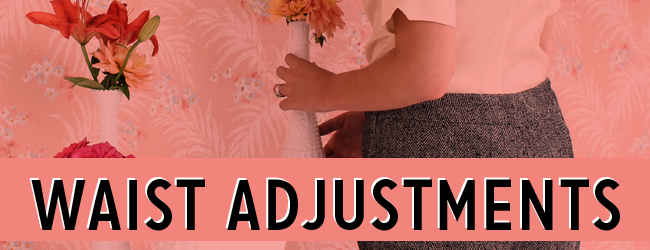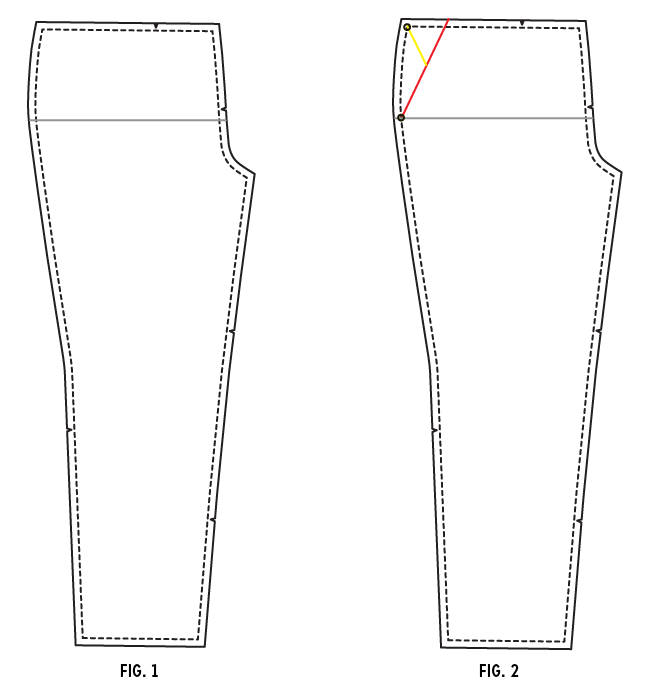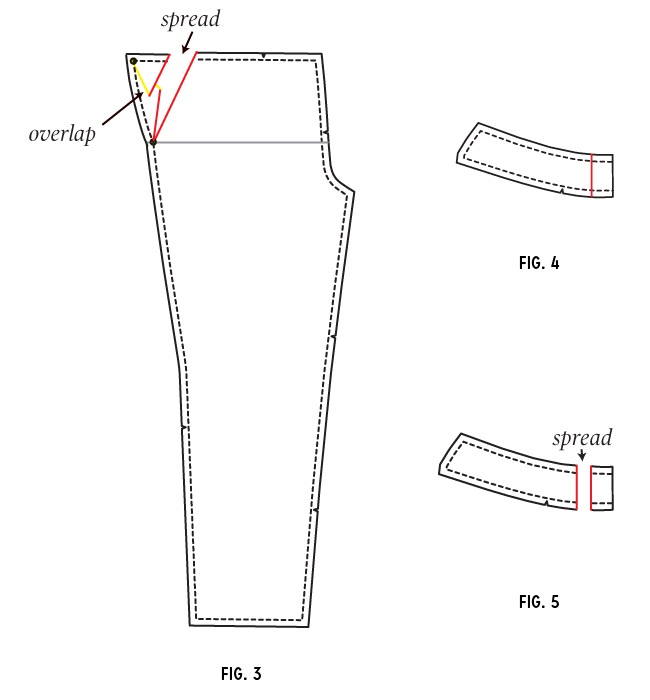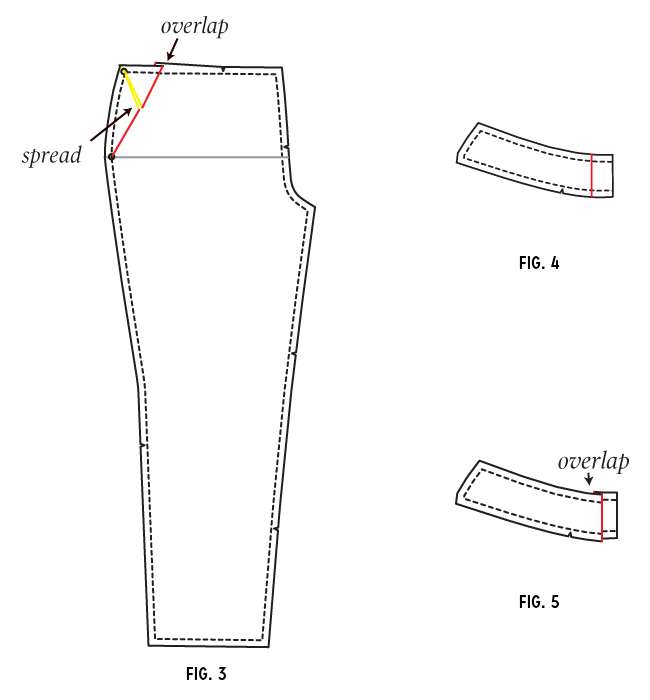
This is the first in a series of posts I have planned for this week all on different fitting adjustments you can use for the Clover sewalong, or for nearly any other pair of pants you make!
Fitting notes:
- After you’ve made your muslin, please refer to the pants fitting cheatsheet to help you decide which adjustments to try.
- Use your muslin to determine how much to adjust the pattern. For example, if you can see that you need an extra inch of width in a certain area, you’ll need to add an inch of width when adjusting your pattern.
- Refer to this post on making muslins for further help with this.
- Be sure to make a second muslin (and perhaps more) after you’ve adjusted your pattern.
How to use the fitting diagrams:
- You will want to trace a copy of your pattern. Not a big deal, since this pattern has only a few pieces, and it will save you from ruining your pattern.
- Mark your seamlines on the pattern (5/8″ from the edge). You don’t need to mark it over the whole pattern, but at least mark the seam at the points where the slash lines are. On the diagrams, the seamlines are marked with dashed lines.
- The diagrams show where to cut, spread, and overlap your pattern.
- You’ll notice little circles in some spots, where the slash lines intersect the seam line. This is called a “pivot point.” Don’t slash the pattern all the way to the edge, but instead slash just to where this circle is. Then carefully snip into the seam allowance, forming a little hinge where the circle is. When you adjust your pattern, you’ll be pivoting at this point rather than from the very edge.
- Once you have your pieces adjusted, tape them into place. You can then retrace the pattern piece if you like.
Further help:
I’d love to help you as much as possible, but please realize there are a lot of you and only one of me. Please be sure to help each other out in the Flickr group as much as you can, and check out the fitting section of our Amazon store for further research.
Adjusting for a large waist

1. Draw in the hip line on your pattern front (the grey line in fig. 1). We’re only showing the front here, but you want to do both front and back.
2. Draw the lines shown in fig. 2.
3. Cut the pattern along these lines. Note the circles, which indicate where you will pivot the pattern. Cut a hinge here in the seam allowance rather than cutting all the way through to the edge (see notes above).

4. Spread and overlap the pattern as shown in fig. 3. You want to add extra width to the waist at the seamline.
5. Draw a line parallel to the center front on the front waistband, and the center back on the back waistband (fig. 4).
6. Cut along this line and spread the pieces the same amount that you did in step 4.
Adjusting for a small waist

1. Draw in the hip line on your pattern front (the grey line in fig. 1). We’re only showing the front here, but you want to do both front and back.
2. Draw the lines shown in fig. 2.
3. Cut the pattern along these lines. Note the circles, which indicate where you will pivot the pattern. Cut a hinge here in the seam allowance rather than cutting all the way through to the edge (see notes above).

4. Spread and overlap the pattern as shown in fig. 3. You want to remove width at the waist right at the seamline. (Note that it looks like the waistline doesn’t line up in the diagram. That’s just so you can see that they’re overlapping, you should try to get them nice and lined up.)
5. Draw a line parallel to the center front on the front waistband, and the center back on the back waistband (fig. 4).
6. Cut along this line and overlap the pieces the same amount that you did in step 4.



Comments
This is lovely and something I’ll definitely put to good use, but do you also have tips for where and how to take in the waist on a completed pair of pants? I haven’t braved the world of pants making, but I am actively conquering the world of pants buying. If I buy to fit my hips, though I have major gaping at the waist. I know you can help!
I like your method and will give this a try. It will work for skirts as well. I tend to avoid making pants.
This is exactly what I need to do…today! Lucky me!
To adjust for a smaller waist in figure 2, is there a specific angle or measurement in from the outside edge at the waist to draw the red line?
These fitting tips are excellent!
You can approximate for that, Lyn… the net effect will be the same. :)
Hi Sarai, I just got the nerve to buy Juniper and now am faced with a bit of a challenge: waist 28,5 and hips 36″, a big differnce in sizes. Did I read correctly that I best start from the hipwidth, so a size 0 and alterthe waistfrom that? And just to check my understanding: if I need to add an additional x inches, would I add x/4 inches on both the front and back pattern pieces?
According to our size chart, 36″ hips would be a 2, not a size 0. Just want to make sure you catch that.
Yes, you’d want to divide the total inches by 4 and add them to each piece. Be sure to also alter the waistband and definitely DEFINITELY make a muslin. Good luck and have fun!
Thanks Sarai, for your swift reply. It will take a bit of courage, but it will happen!
Hello! Thank you so, so much for this information. My waist is a whopping 37.5 inches (dang post-baby body) but my hips are 39 inches. I’m new to this sewing malarkey, and have been getting sooo disillusioned because I have to choose patterns by my ridiculously large waist size, then scale the hips down. Nothing looks good. Perhaps if I choose by my hip size and increase the waist, I might actually make something I can wear. So grateful for this, thanks again. xx
Thank you for this help. It saved me lots of time and more material. I was worried I would fold up the trousers and put them to one side like lots of other items. They look great xx